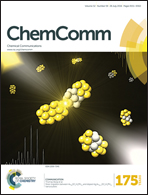Self-monitoring of tear glucose: the development of a tear based glucose sensor as an alternative to self-monitoring of blood glucose
Abstract
Tear glucose sensing for diabetes management has long been sought as an alternative to more invasive self-monitoring of blood glucose (SMBG). However, tear glucose sensors were known to have limitations, including correlation issues with blood glucose due to low sample volume, low concentration of glucose in the tear fluid, and evaporation of the tear sample. An engineering design approach to solve these problems led to the development of an integrated device capable of collecting the tear sample from the ocular surface with little to no stress on the eye, with an extremely low limit of detection, broad dynamic range, and rapid detection and analysis of sample. Here we present the development of a prototypical self-monitoring of tear glucose (SMTG) sensor, summarizing bench studies on the enzymes and their specificity, the development of the fluid capture device and its manufacture and performance and results of system testing in an animal study where safety, lag time and tear glucose to blood glucose correlation were assessed.


 Please wait while we load your content...
Please wait while we load your content...